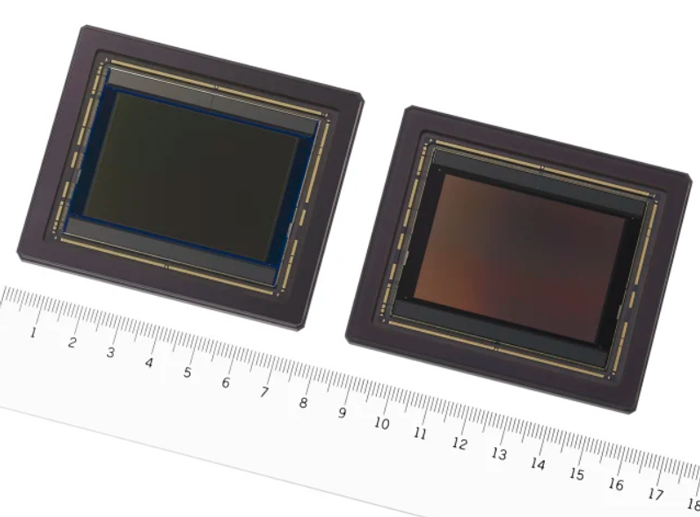Join More Than 50,000+ Subscribers and get latest camera news and rumors
NEW CAMERA VIDEOS ON YOUTUBE
Download Our Android App
|
By admin, on December 10th, 2023

According to NYA / E8M Fuji GFX25 and GFX200 rumors are likely fake
I forgot to review the Fuji Weibo I posted at three in the morning.
I missed what I said in the group chat. The obsessions of GFX25 and GFX200 are probably fake. The biggest problem is the same: the supplier does not have such a sensor.
And for Fujifilm’s GFX lens group, it’s hard for me to believe that a dedicated video camera would use that motor to move.
Medium format must be a celebration of the machine. It would be outrageous not to pursue image quality. Except for focusing, everything else is just an add-on. Continuous shooting must be done without losing image quality.
The control of the GFX100 II is good, and the shoulder design is very pleasing. But the price for speed seems a bit meaningless.
I am more looking forward to a GFX100S II that has no video tax, good picture quality, and better focus than the GFX 100S.
But seriously, many of the additional video functions of the GFX100 II have unclear meanings. What is this Premista? It is better to have a built-in digital zoom for users to customize. It really makes me confused.
We have summarized the information here
- GFX25 and GFX200 rumors are likely fake: The author doubts the existence of GFX25 and GFX200 / or their arrival in 2024, because their supplier lacks the necessary sensor technology.
- GFX video camera motor questioned: The author finds it hard to believe that Fujifilm would use the current motor technology of lenses in a dedicated GFX video camera.
- Medium format should prioritize image quality: The E8M says that medium format cameras should primarily focus on image quality, with other secondary features like video. They believe continuous shooting shouldn’t compromise image quality.
- Hope for a GFX100S II with focus improvements: E8M Wish to see some AF improvements over the upcoming GFX100S II. also image quality without increase in cost due to intro of enhanced video features.
Thenewcamera.com Take: What I feel is that Fujirumor.com is strongly connected to Fuji personnel, so they get early hints about product development and announcements. At the same time, we do have information related to Sony’s 200MP medium format sensor, so the arrival of GFX 200 is expected without a doubt. Maybe not in 2024, but yes, we can expect it in 2025. The Fuji GFX 25 also looks fake to me, but if Fuji wants to make a more affordable medium format camera, they can do so. This step will attract more consumers as well as third parties.
Follow us on our social pages FACEBOOK | TWITTER | INSTAGRAM, –> See More Fuji Rumors Or subscribe to us via Email
By admin, on March 9th, 2021

Sony officially released 120MP (127.68 Effective pixels) Medium Format Sensors with a global shutter. As we all know Fuji Cameras uses a Sony Medium format sensor. So, in near future, we may see Fuji GFX 120 or Fuji GFX 200 soon.
Sony announced the commercialization of the CMOS image sensor “IMX661” on March 9th. Mass production of new sensors will begin in April of 2021.
1. Sony 120MP Medium Format Sensor Major Features
Main Features
The industry’s highest effective pixel count of 127.68 megapixels
This product features a large optical size of 3.6-type (56.73mm diagonal), nearly 10 times larger than the common 1.1-type image sensor corresponded to the C mount lens for industrial equipment with a pixel size of 3.45 μm, resulting in a massive pixel count of 127.68 megapixels, which is the industry’s highest for a CMOS image sensor equipped with a global shutter. It enables a wide viewing angle and high-resolution imaging by increased pixel count, and the motion distortion-free imaging demanded on cameras for industrial equipment, thereby improving imaging efficiency and recognition precision.
High-speed image readout
Generally, increased pixel count means increased signal processing volume, which causes issues such as a drop in frame rate and longer readout times. In order to realize high-speed readout, it is necessary to improve the processing functionality of the AD converter which converts the analog signal output from the pixel to digital signals, and at the same time, increase the speed of the output interface.
This product features Sony’s original device configuration employing a chip-on-wafer process where chips with certain functions are stacked on top of the pixel wafer, allowing for optimal positioning of the AD converter. This design improves AD converter processing functionality without increasing the size.
The new sensor also employs the Scalable Low Voltage Signaling with Embedded Clock (SLVS-EC™)*7 high-speed interface standard developed by Sony, in order to make output interface faster. These two original technologies enable 127.68 megapixels,10bits,21.8fps, which is a high-speed output data rate nearly four times faster than conventional models*4.The dramatic increase in multi-pixel and readout speed greatly contribute to the improvement of productivity in industrial applications.
Equipped with signal processing capabilities needed for a variety of industrial applications
The new product is equipped with a range of signal processing capabilities required for industrial equipment CMOS image sensors to meet diverse applications and needs. These include such as; trigger synchronization for controlling imaging timing during high-speed inspections; Region of Interest (ROI), which reduces post signal processing load by only reading out the required regions; gradation compression, which reduces data volume while outputting required information; multi-exposure, which is capable of detecting the trajectory of moving objects; short exposure time for blur-free imaging of objects moving at high speeds; pixel binning readout, which can enhance sensitivity in low luminance situations.
2. Sony 120MP Medium Format Sensor Specification
|
KEEP THIS BLOG ALIVE - Support New Camera Buy Canon Lenses, Buy Music CD or Digital Camera at amazon it helps this site, and you do not pay anything extra, it is just a way to help support this site.

|








